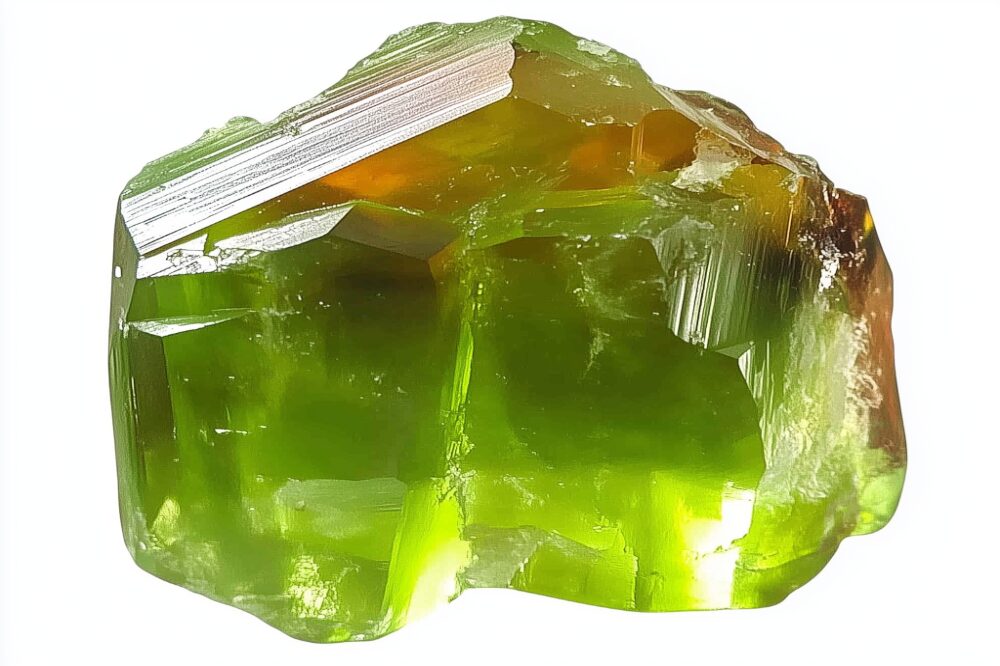New Mexico is a fantastic place to hunt for peridot, with its vibrant green gems hiding in various spots. From popular places like Socorro to the lesser-known Black Range, there are plenty of places where peridot can be found.
Whether an experienced rockhound or a beginner, New Mexico has something for everyone. With rocky hills and volcanic fields, there are endless opportunities to discover peridot and add it to your collection.
How Peridot Forms Here
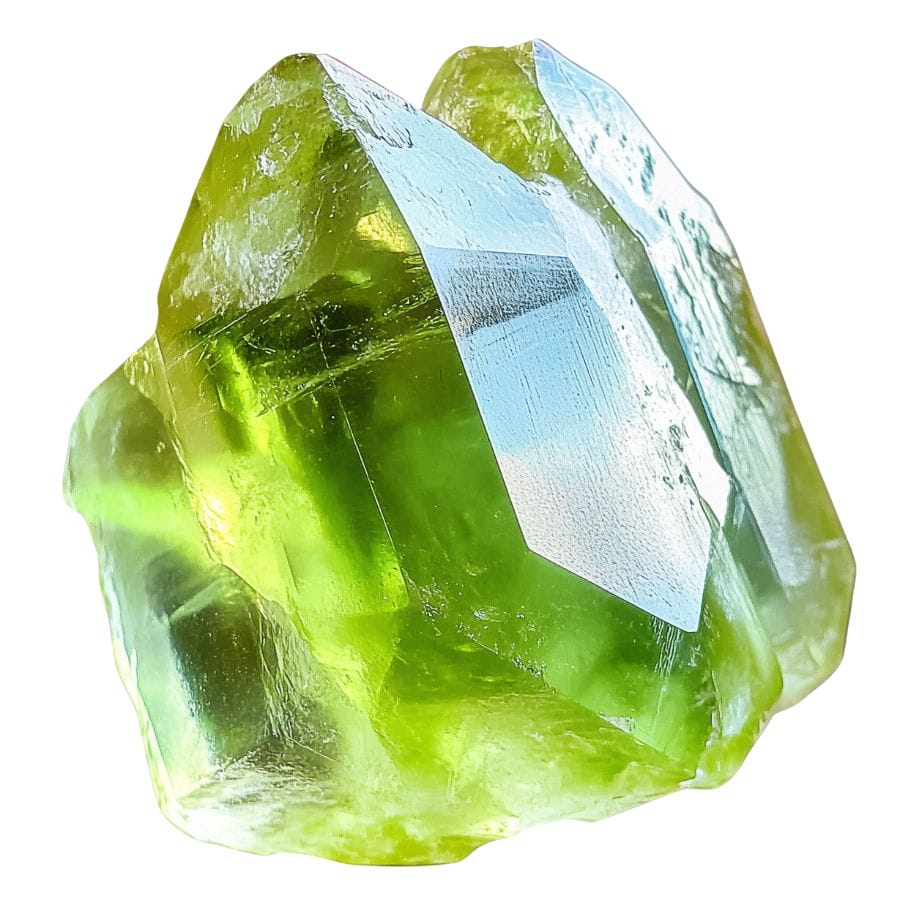
Peridot forms deep within Earth’s mantle, around 20 to 55 miles below the surface, where intense heat and pressure create the perfect conditions. It’s actually made from magma that cools super slowly, letting the crystals grow nice and big.
The main ingredient is olivine, which needs temperatures between 1,000°C to 1,300°C to form properly. When volcanoes erupt, they sometimes bring these green gems up with them in basalt rocks.
What’s really cool is that peridot can also come from meteorites – yep, some of these crystals literally fell from space! The iron and magnesium inside the stone is what gives it that signature olive-green color.
Types of Peridot
Peridot’s value fluctuates based on its origin and quality, with its vivid colors making it a distinctive and sought-after gemstone. Here are the different types of Peridot:
Burmese Peridot
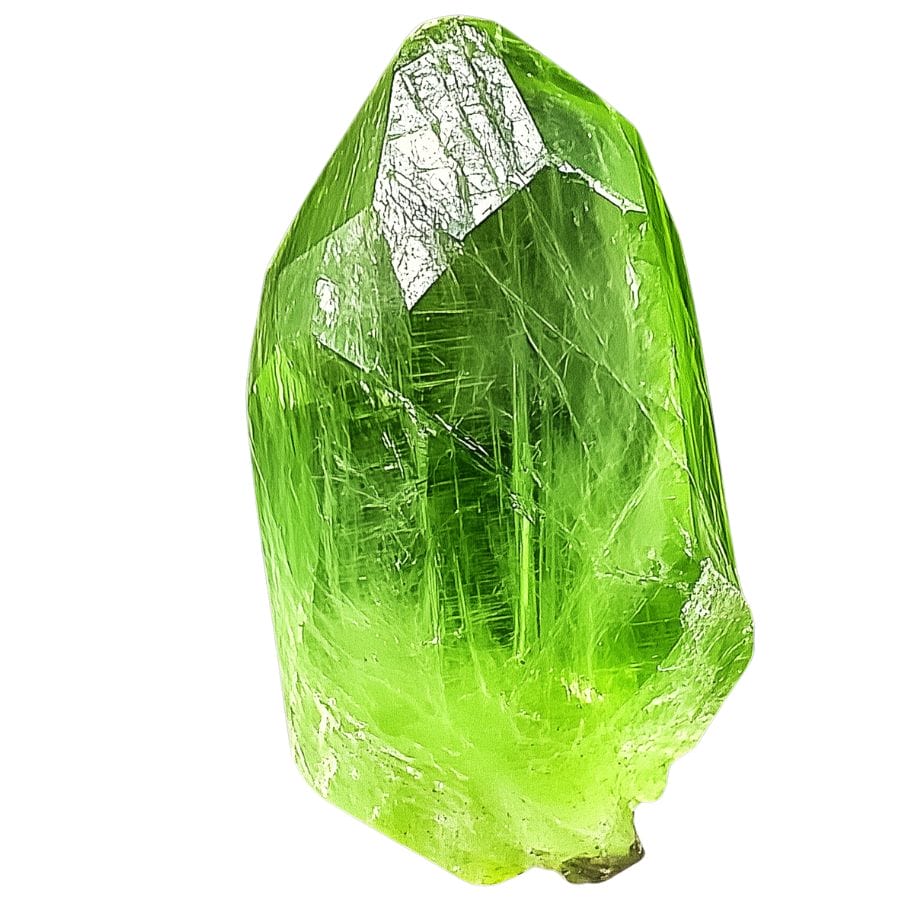
Burmese Peridot shows off a pure, bright green color that looks almost like spring leaves. Most other peridots have brown or yellow mixed in, but Burmese ones usually don’t.
The stone’s special green color comes from the iron inside the crystal. When light hits it, the stone seems to glow from within, creating a beautiful effect that catches everyone’s eye.
These stones often have special markings inside called “lily pads.” These are small, round patterns that look like tiny circles when you look at them with a magnifying glass.
You can often find Burmese Peridot in larger sizes, which makes them great for bigger jewelry pieces. The stones keep their bright color even under different kinds of lighting, so they look good both in sunlight and indoor light.
Pakistani Peridot
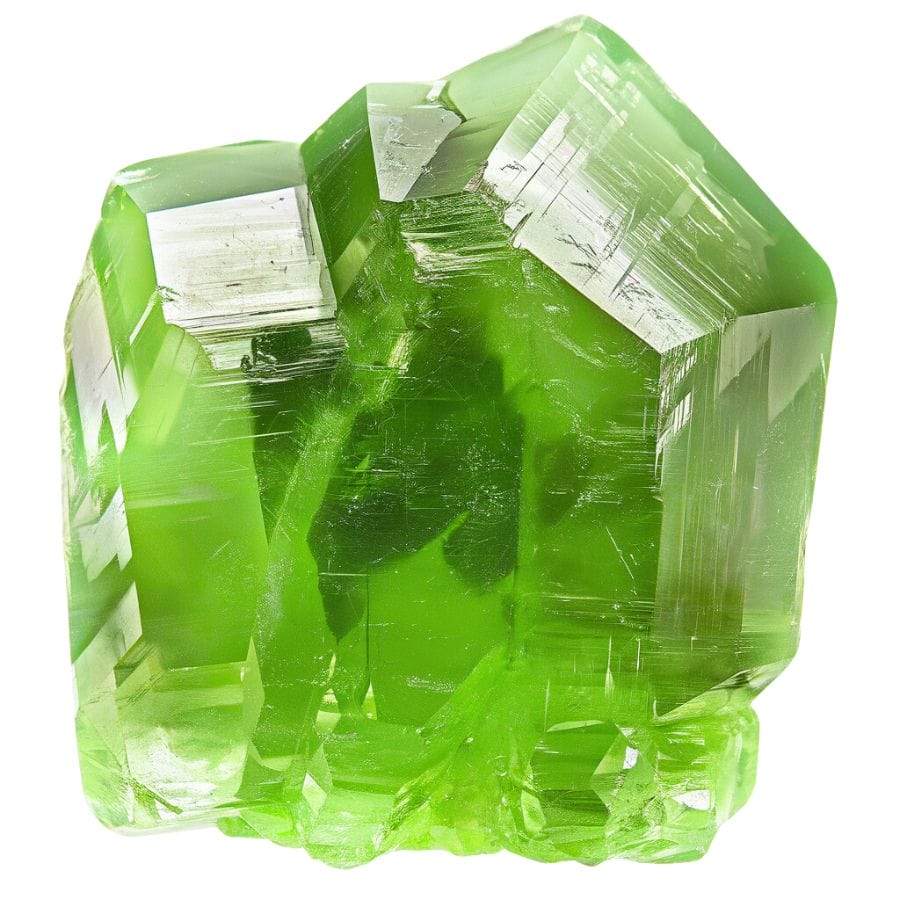
Pakistani Peridot is known for its vibrant green hues, which can range from yellow-green to olive green. The stones are usually very clear and shine beautifully when light hits them.
The stone typically has a vitreous luster and can be quite transparent, showcasing its brilliance. High-quality specimens can exhibit exceptional clarity with minimal inclusions, which enhances their appeal in jewelry.
Inside these stones, you might find tiny bubbles of liquid and gas. These create interesting patterns that make each stone has its unique pattern of these markings.
These peridots often come in larger sizes and maintain their bright color even under artificial light. This makes them look just as good in the evening as they do during the day, which is why some people call them “evening emeralds.”
Arizona Peridot
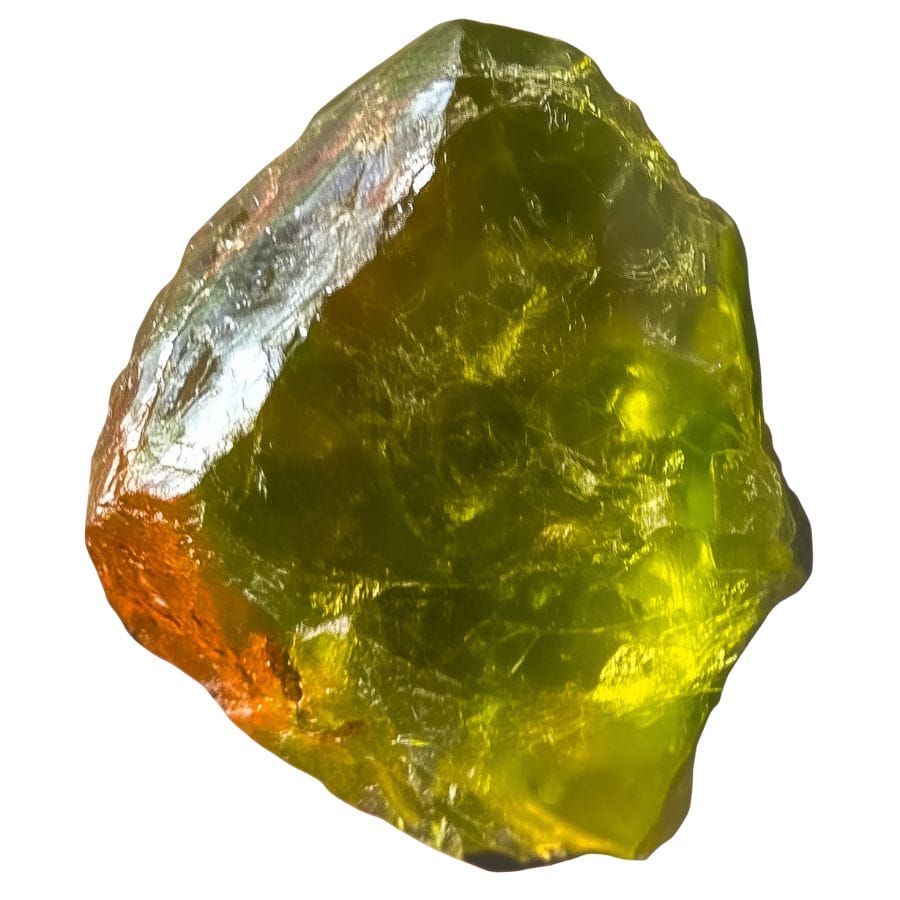
Arizona Peridot shows off a bright, lime-green color that sometimes has olive tones. The stones are usually smaller than other peridots but make up for it with their exceptional brightness and sparkle.
These stones often have a special kind of clarity that makes them appear very clean to the naked eye. When you look at them closely, you might see tiny specks of black minerals inside, which are typical of Arizona stones.
Arizona Peridot is especially famous due to its association with the San Carlos Apache Reservation, which is one of the largest sources of peridot in the world. The region’s peridot is highly valued not only locally but also within the broader gemstone market for its quality and vibrant color.
Changbai Peridot
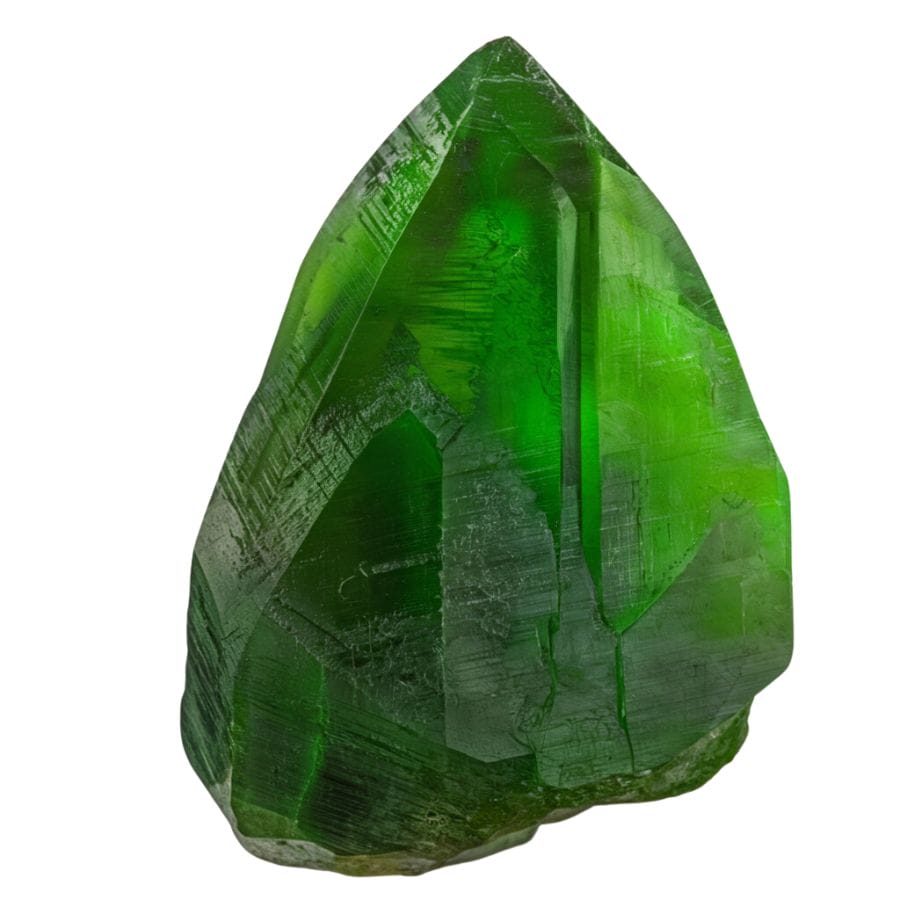
Changbai Peridot displays a deep, rich green color that sets it apart. Their color is more intense than other peridots, showing deep forest green tones.
These stones usually come in medium sizes, around one carat. What makes them special is how clean they look – most have very few internal marks or inclusions. This clarity lets more light pass through, making them especially bright and sparkly.
The color of Changbai Peridot stays consistent throughout the stone. Unlike some other peridots that might show patches of different colors, these maintain their rich green tone evenly. This makes them particularly appealing when set in jewelry.
Their superior clarity and rich color have made them increasingly popular since 2005. Even though they’re newer to the market compared to other peridots, they’ve quickly gained recognition for their outstanding quality.
Vietnam Peridot
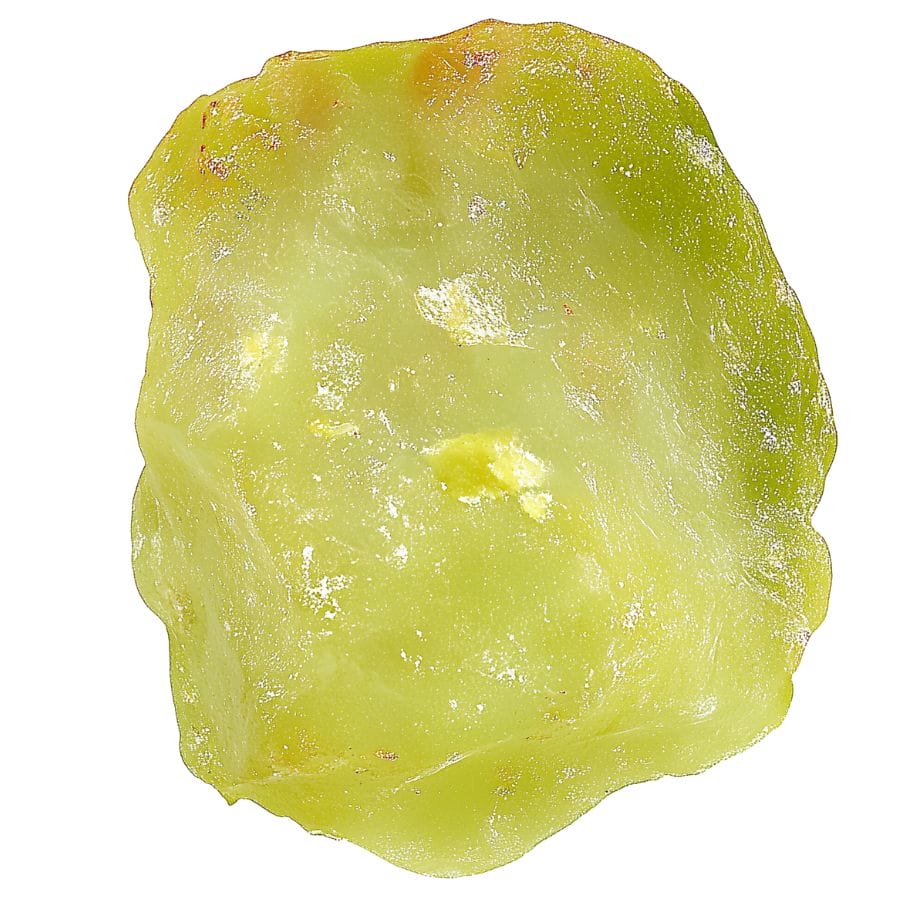
Vietnam Peridot, also known as chrysolite, has a special yellowish-green color that makes it easy to spot. They often come in larger sizes than peridots from other places.
When light passes through these stones, it creates a unique double-image effect. If you look closely at a faceted stone, you might see the edges appear doubled. This effect makes them sparkle in a special way.
Vietnamese peridot is often found in mafic and ultramafic rocks, which are rich in iron and magnesium, leading to the formation of larger and higher-quality stones.
The green color stays even throughout the whole stone. This consistent color is one reason why collectors really like Vietnam Peridot.
Norway Peridot
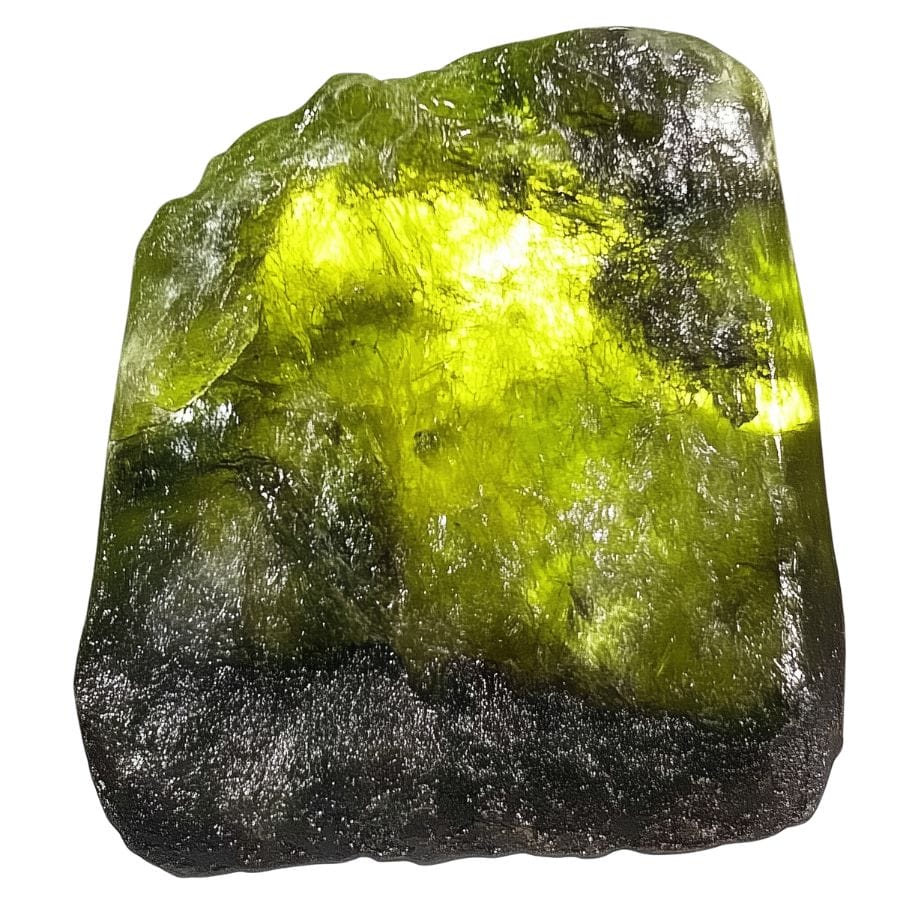
Norway Peridot comes in beautiful olive green shades. The color can range from light yellow-green to deep olive. The amount of iron inside the stone decides how dark or light the green will be.
When light enters these stones, it splits into two beams. This makes the stone look extra sparkly and bright, even when the light isn’t very strong. You can see this special effect best in well-cut stones.
Norway Peridot is part of a long tradition of peridot use in jewelry and artifacts, including significant pieces like those found in the Shrine of the Three Kings in Cologne Cathedral, which were initially thought to be emeralds but were later identified as large peridots.
Pallasite Peridot
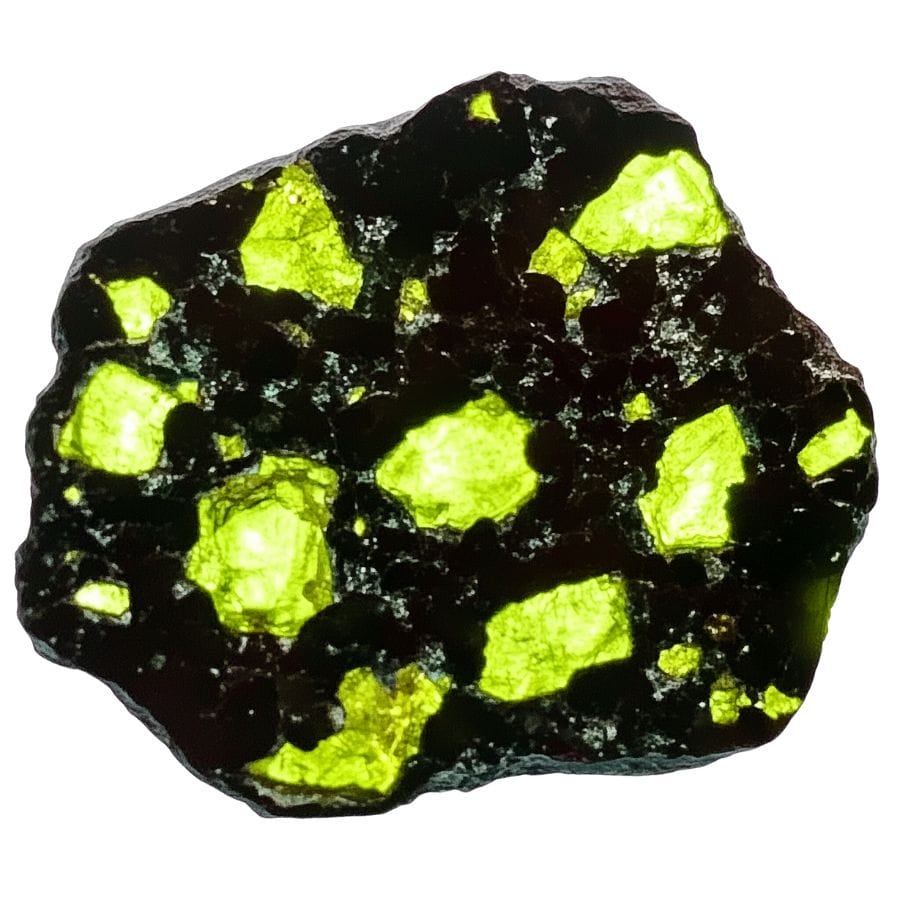
Pallasite Peridot comes from space! These green crystals are found inside meteorites, mixed with metal from space. The green crystals stand out beautifully against the silvery-gray metal background.
These stones form a natural pattern in the meteorite. The mix of bright green crystals and shiny metal creates a beautiful design that looks like stained glass when light shines through it.
Scientists find these stones especially interesting because they tell us about how planets form. The mix of metal and crystal shows us what the inside of planets might look like.
These stones are pretty rare since they only come from meteorites. Collectors really like them because each piece tells a story about space and has its own unique pattern of green crystals.
Antarctica Peridot
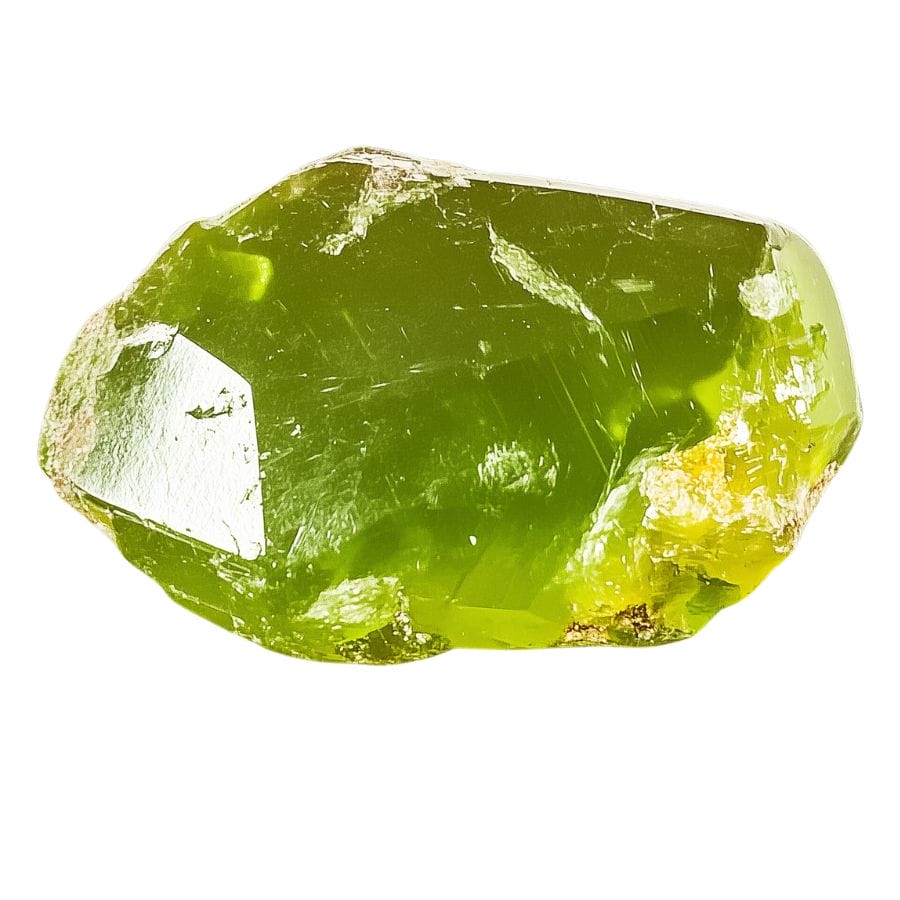
Antarctica Peridot usually comes in smaller sizes, but each stone packs a lot of sparkle. They show a pure green color that can look slightly yellowish or olive in different lights.
These stones formed under extreme cold conditions, which affects how they look. They tend to be very clear with few internal markings. Most pieces are under two carats in size.
The extreme conditions where these stones formed make them special. They had to survive intense pressure and cold temperatures to reach the surface.
These stones are among the rarest peridots because they’re so hard to find. Their small size actually helps them sparkle more intensely than larger stones.
Hawaii Peridot
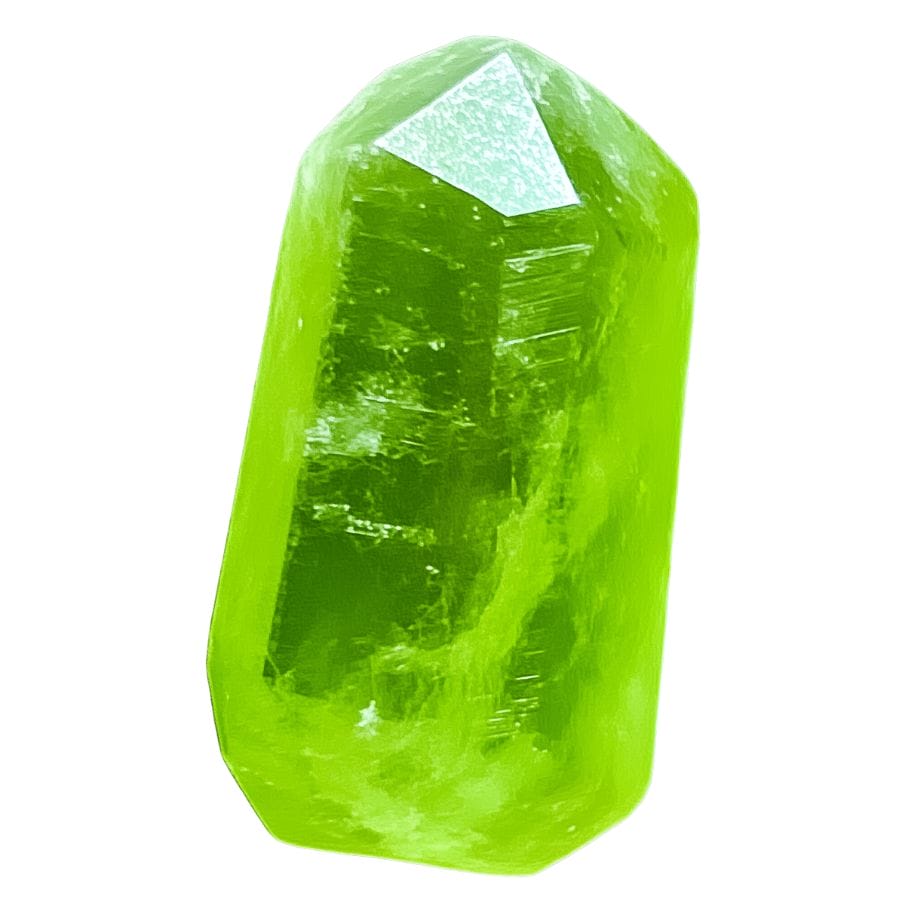
Hawaii Peridot has a rich olive-green color. Inside many stones, you can find special bubble-shaped marks called “lily pads.” These marks look like tiny round discs frozen in the stone.
One cool thing about these stones is that some of them contain tiny bits of gas trapped inside from when they formed. Scientists can study these bubbles to learn about conditions deep in the Earth.
In Hawaiian culture, peridot is associated with Pele, the goddess of fire and volcanoes, which adds to its allure among collectors interested in cultural artifacts.
New Mexico Peridot
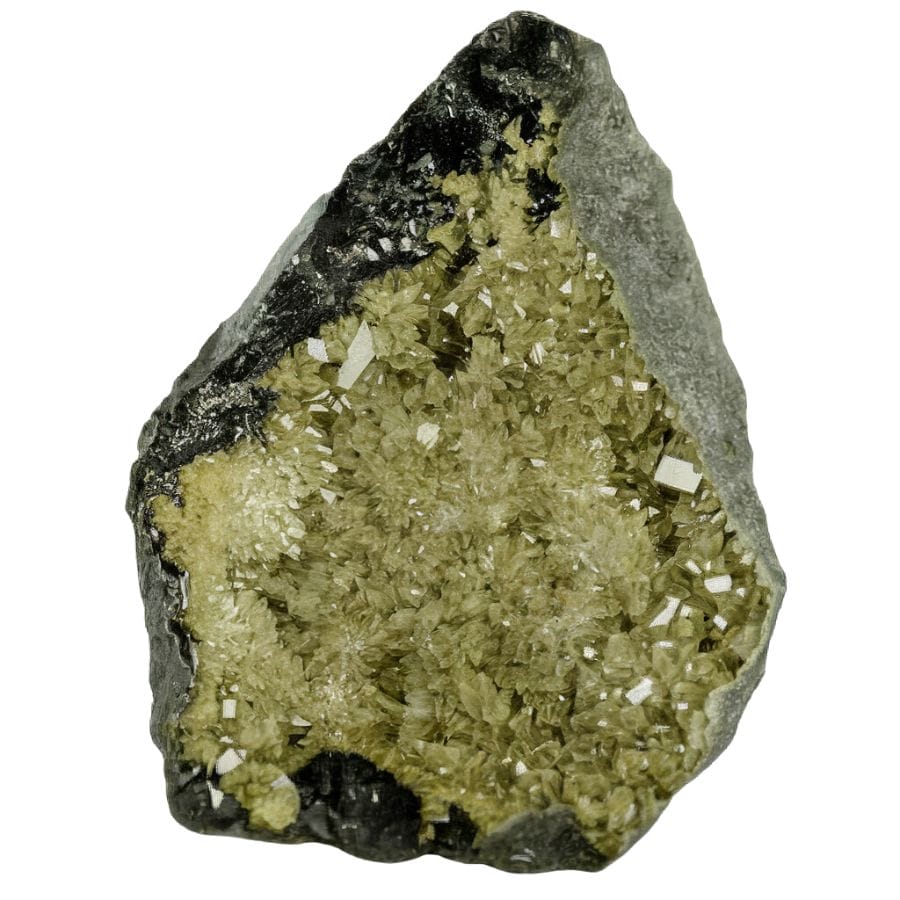
New Mexico peridot typically ranges in color from brown and greenish-brown to yellowish-green and the more desirable green hue. This variety stands out due to its potential for a wider color range compared to peridot from other regions.
One notable aspect of New Mexico peridot is its occurrence in volcanic debris from ancient eruptions, specifically from a 180,000-year-old volcano. This geological background contributes to the unique properties of the stones found there.
The Kilbourne Hole area is particularly noted for producing high-quality peridot that is sometimes considered superior to that from Arizona.
What Rough Peridot Looks Like
Peridot has several distinctive characteristics that can help you identify it in its natural form. These are the key features to look for.
You also want to make sure you know what else you’re looking at. Many rockhounds don’t really know what they’re finding and tossing away.
If you want REAL results finding incredible rocks and minerals you need one of these 👇👇👇
Finding the coolest rocks in isn’t luck, it's knowing what to look for. Thousands of your fellow rock hunters are already carrying Rock Chasing field guides. Maybe it's time you joined the community.
Lightweight, mud-proof, and packed with clear photos, it’s become the go-to tool for anyone interested discovering what’s hidden under our red dirt and what they've already found.
Join them, and make your next rockhounding trip actually pay off.
What makes it different:
- 📍 Find and identify 140 incredible crystals, rocks, gemstones, minerals, and geodes across the USA
- 🚙 Field-tested across America's rivers, ranchlands, mountains, and roadcuts
- 📘 Heavy duty laminated pages resist dust, sweat, and water
- 🧠 Zero fluff — just clear visuals and straight-to-the-point info
- ⭐ Rated 4.8★ by real collectors who actually use it in the field
Check for a glassy or waxy luster
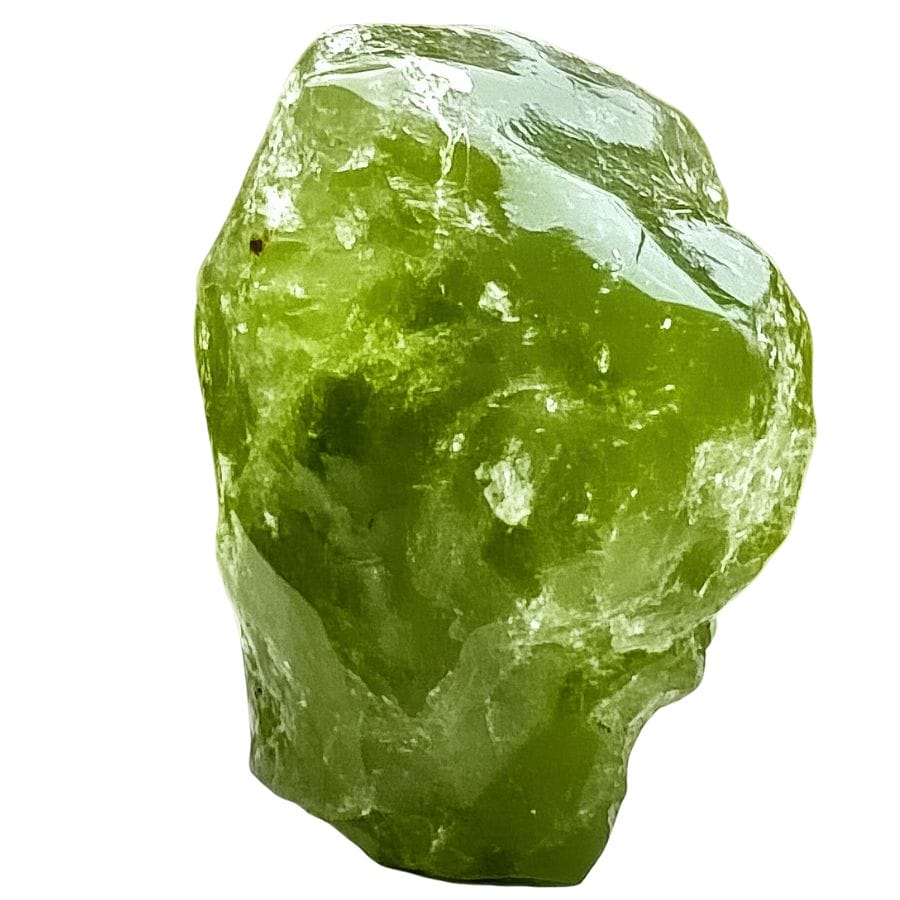
Raw peridot typically shows a distinct glassy to waxy shine, even in its unpolished state. When you shine a light on it, you’ll notice it’s not quite as sparkly as quartz but definitely shinier than most common rocks.
Pro tip: if it looks kind of like olive oil frozen in stone form, you might be onto something!
Look for that signature olive-green color
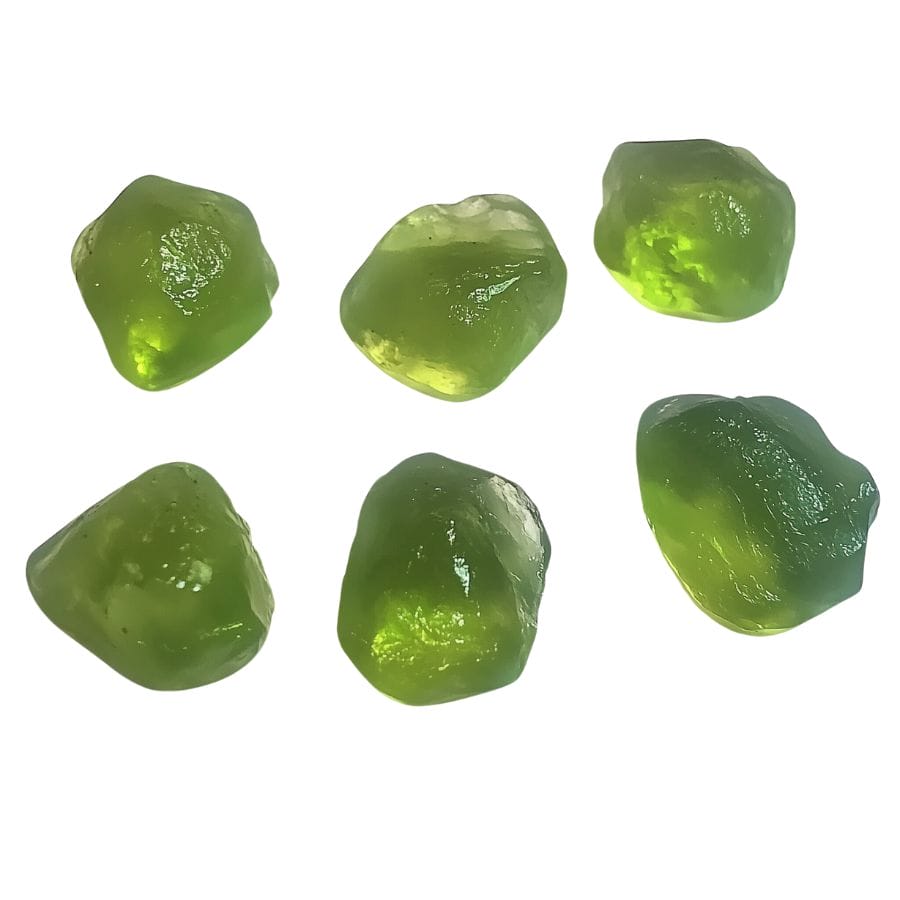
Unlike other green stones, peridot has this unique yellowish-green to olive-green color that’s pretty consistent throughout the stone.
Here’s the thing – even when rough, it shouldn’t have dark spots or zones. If you spot patches of brown or black, you’re probably looking at something else.
Hold it up to natural light – a genuine peridot will show that characteristic color even in its rough form.
Examine the crystal structure
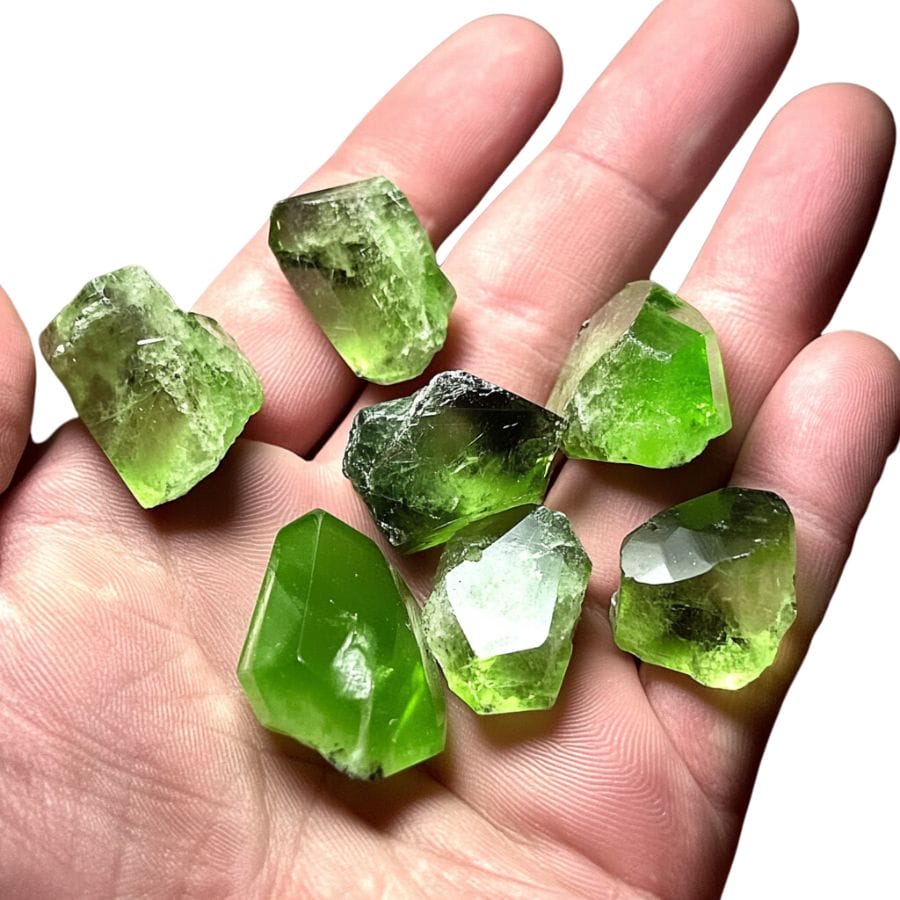
In its natural state, peridot forms stubby, prismatic crystals. Look for somewhat rectangular or barrel-shaped formations – they might be rough, but you should see hints of this shape.
Sometimes you’ll spot these crystals embedded in darker volcanic rock (that’s basalt, by the way). The surfaces might look a bit pitted or weathered, but they shouldn’t be perfectly smooth.
A Quick Request About Collecting
Always Confirm Access and Collection Rules!
Before heading out to any of the locations on our list you need to confirm access requirements and collection rules for both public and private locations directly with the location. We haven’t personally verified every location and the access requirements and collection rules often change without notice.
Many of the locations we mention will not allow collecting but are still great places for those who love to find beautiful rocks and minerals in the wild without keeping them. We also can’t guarantee you will find anything in these locations since they are constantly changing.
Always get updated information directly from the source ahead of time to ensure responsible rockhounding. If you want even more current options it’s always a good idea to contact local rock and mineral clubs and groups
Tips on Where to Look
Peridot typically forms in volcanic areas and can be found in several accessible locations. Here’s where you should start looking:
Volcanic Rock Formations
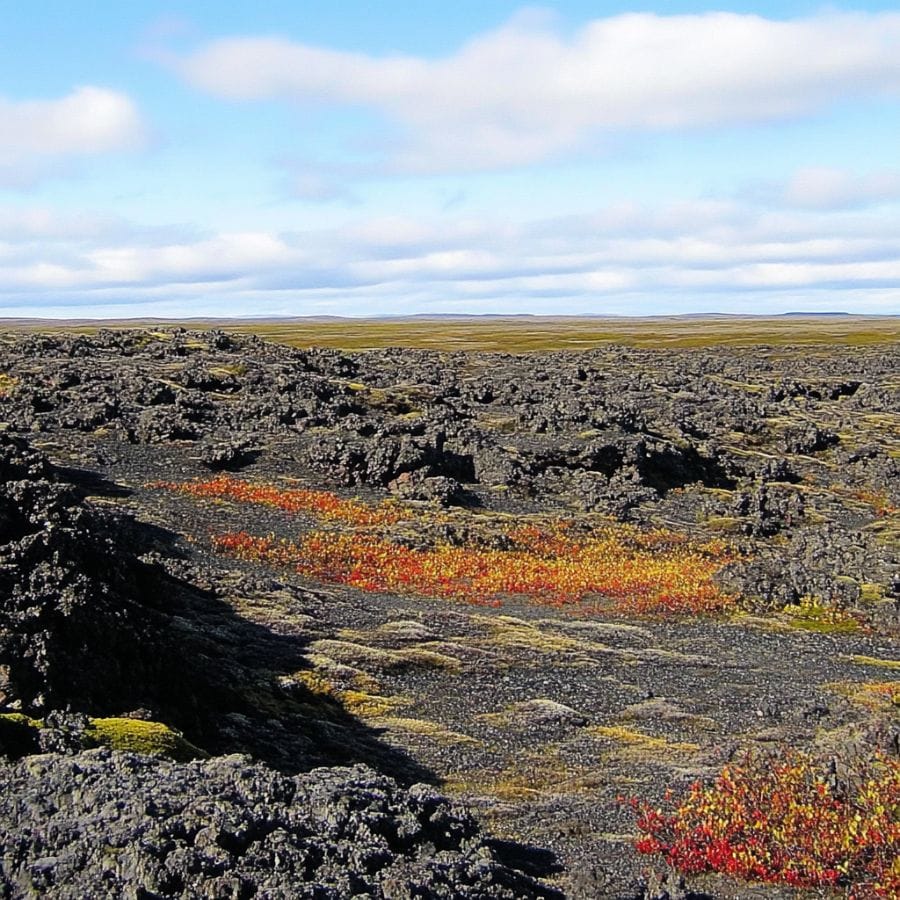
Look for dark-colored basalt rocks and olivine-rich formations. Check areas where ancient lava flows have created large rock deposits, especially those with visible green crystals embedded in the rock. These rocks often weather over time, exposing the peridot crystals.
Stream Beds and Gravel Banks
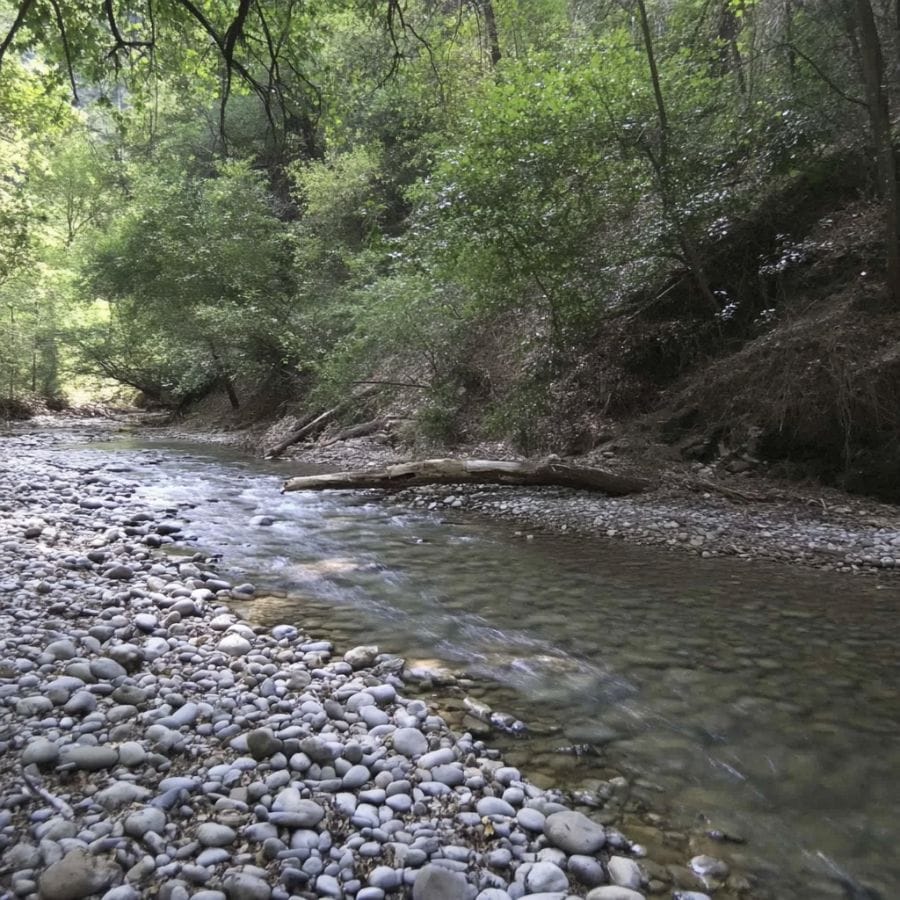
Search in stream beds where water has naturally broken down volcanic rocks. Peridot is usually more concentrated in these areas because water carries away lighter materials while leaving behind heavier minerals.
This makes it easier to spot the olive-green crystals among the gravels and sands that have accumulated over time.
Old Mining Areas
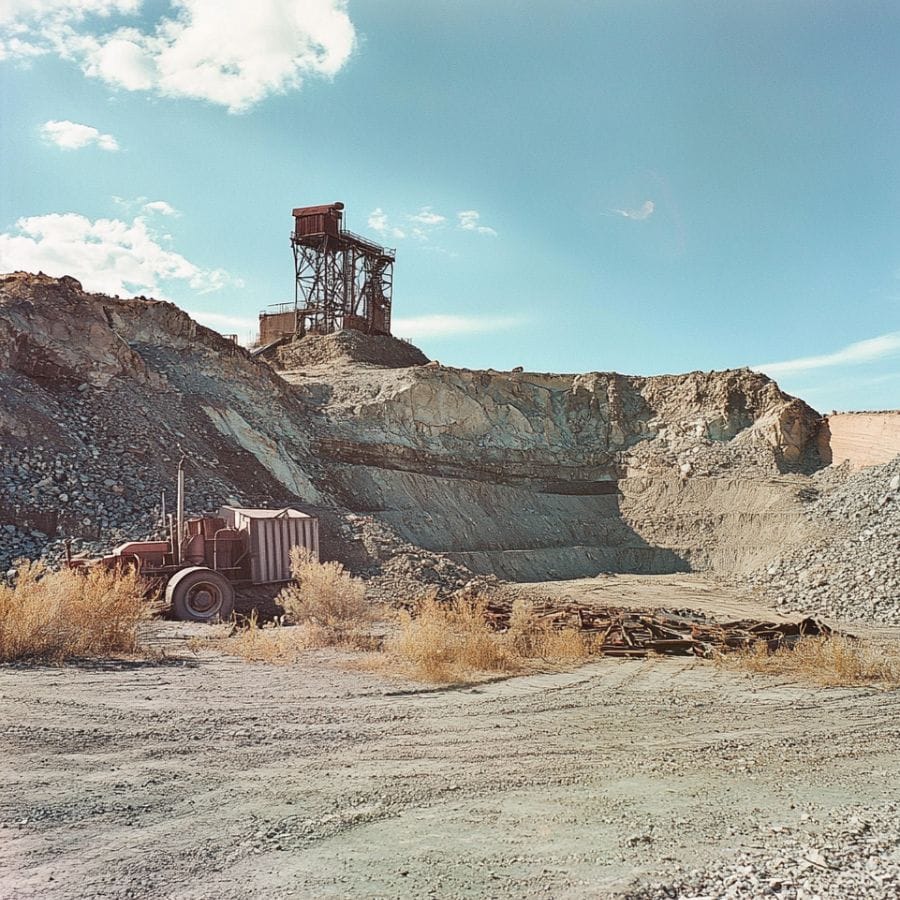
Visit abandoned mine dumps and tailings, particularly those known for copper or nickel mining operations that were active in volcanic regions.
These areas often contain peridot as a secondary mineral, and since the rock has already been broken down during previous mining operations, the gems are easier to spot.
The types of Peridot you can find around the state
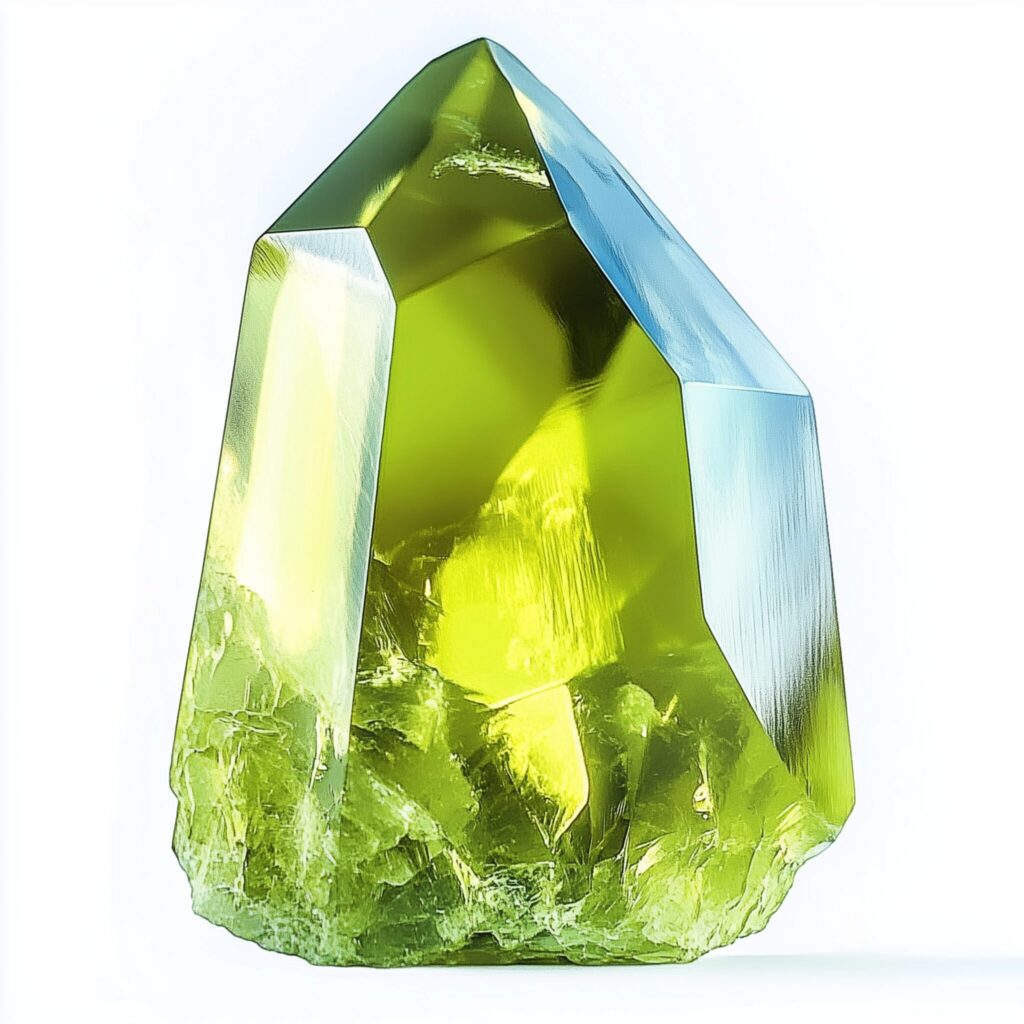
Peridot found in New Mexico comes in a variety of colors, from brownish and greenish-brown to yellowish-green, with vibrant green being the most sought after. These stones stand out because they form in volcanic debris from ancient eruptions, giving them unique characteristics.
The Kilbourne Hole area is known for producing some of the best quality peridot, often considered even better than the stones found in Arizona. The peridot here is clear, vibrant, and displays beautiful green hues that make it a favorite among gem hunters.
Some Great Places To Start
Here are some of the better places in the state to start looking for peridot:
Always Confirm Access and Collection Rules!
Before heading out to any of the locations on our list you need to confirm access requirements and collection rules for both public and private locations directly with the location. We haven’t personally verified every location and the access requirements and collection rules often change without notice.
Many of the locations we mention will not allow collecting but are still great places for those who love to find beautiful rocks and minerals in the wild without keeping them. We also can’t guarantee you will find anything in these locations since they are constantly changing.
Always get updated information directly from the source ahead of time to ensure responsible rockhounding. If you want even more current options it’s always a good idea to contact local rock and mineral clubs and groups
Robledo Mountains
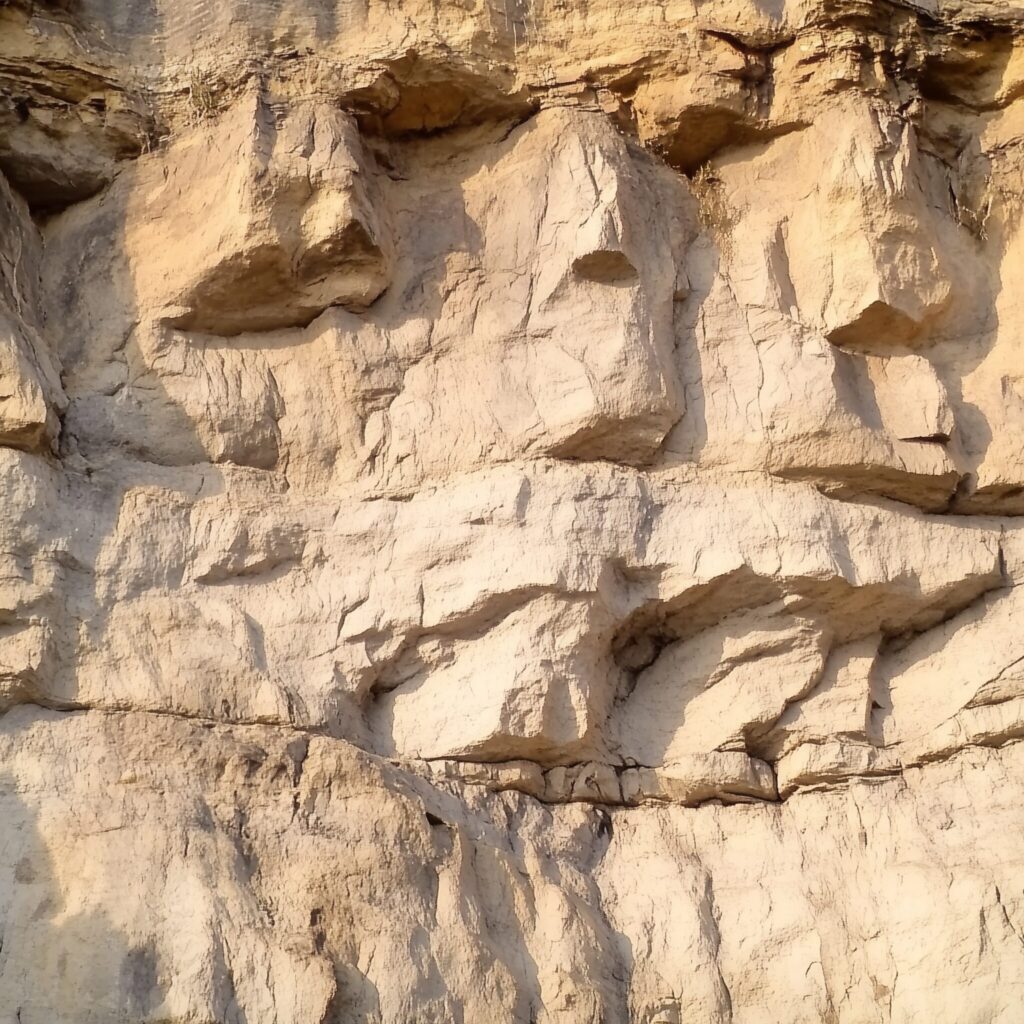
The Robledo Mountains in New Mexico are another prime spot for finding peridot. When exploring this area, focus on the edges of rock outcrops and weathered basalt, as peridot is often found in the cracks and crevices.
After a good rain is a great time to search, as the peridot crystals may be washed loose from the rocks. Make sure to carefully sift through the loose debris and rocks around these areas, as you might find peridot mixed in with other volcanic material.
Dona Ana Mountains
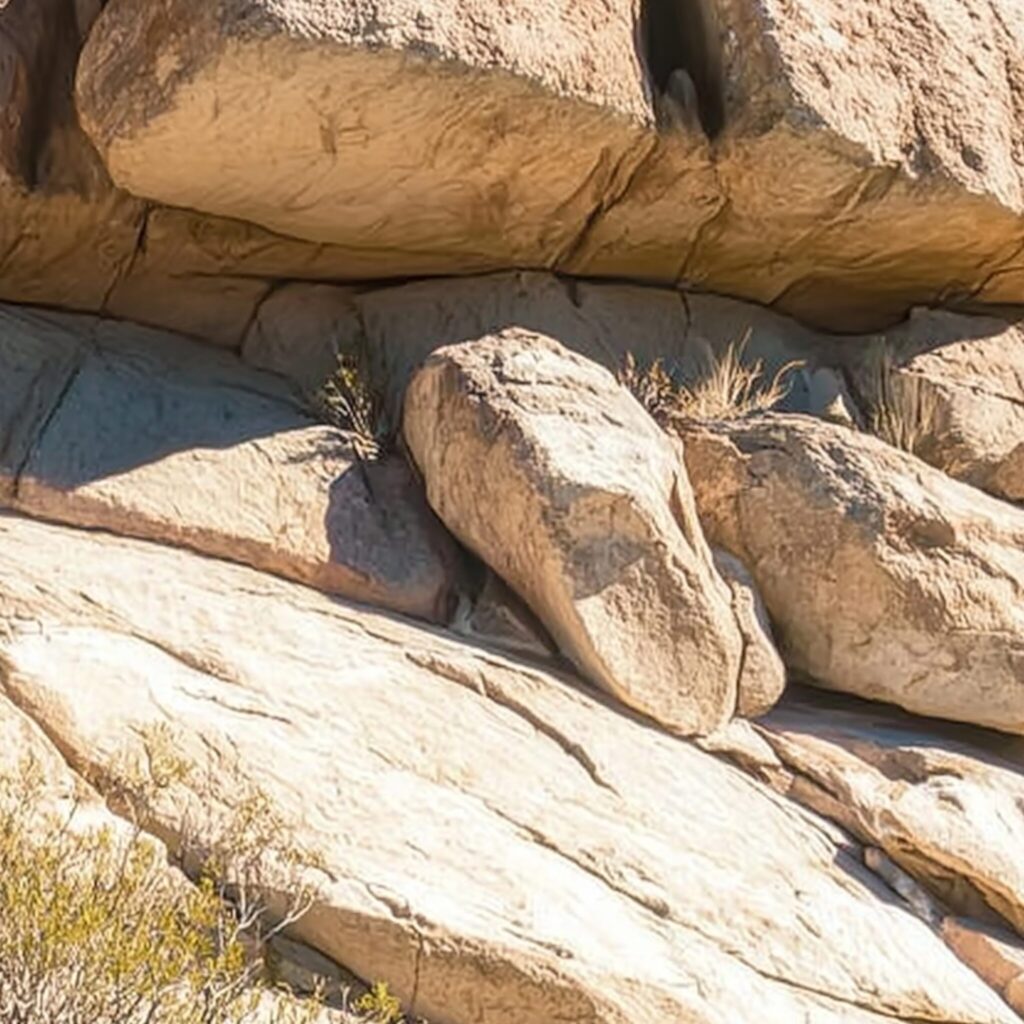
The Dona Ana Mountains are a great spot to search for peridot, as the volcanic rocks here often hide these green gems. Look for places where the rocks have cracked or eroded, since peridot is usually found in these weathered spots.
The best spots are in the old volcanic vents where peridot crystals formed millions of years ago. The south-facing slopes tend to have more exposed crystals because the strong desert sun breaks down the rocks faster there.
Sierra Blanca Mountains
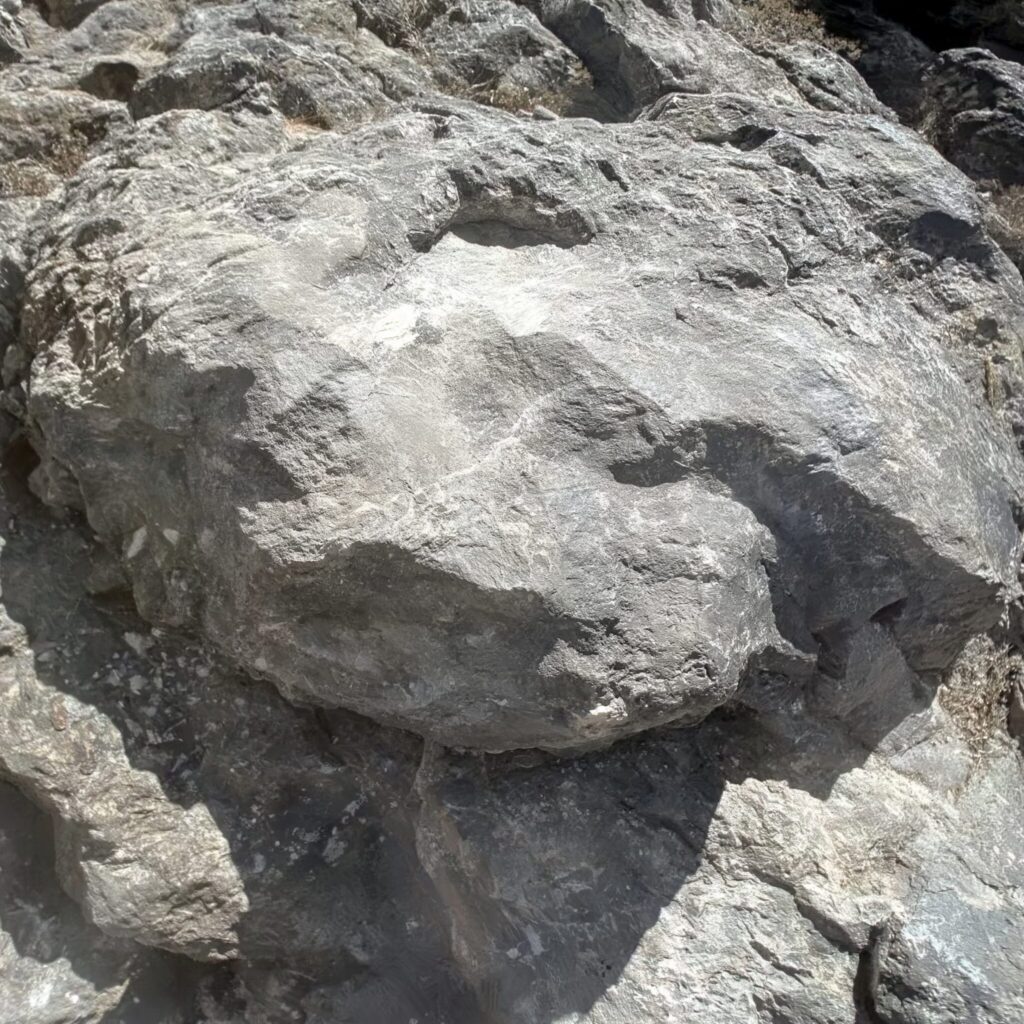
The Sierra Blanca Mountains in New Mexico offer a great spot for finding peridot, especially along the rocky slopes and outcrops. The volcanic deposits here break down over time, creating perfect spots where peridot can be found.
Expert rockhounds check the east-facing cliffs in late afternoon when the low sun makes the gems sparkle against the dark rocks. Bring safety glasses and a small chisel, since the best specimens are often still stuck in the rock face.
Animas Mountains
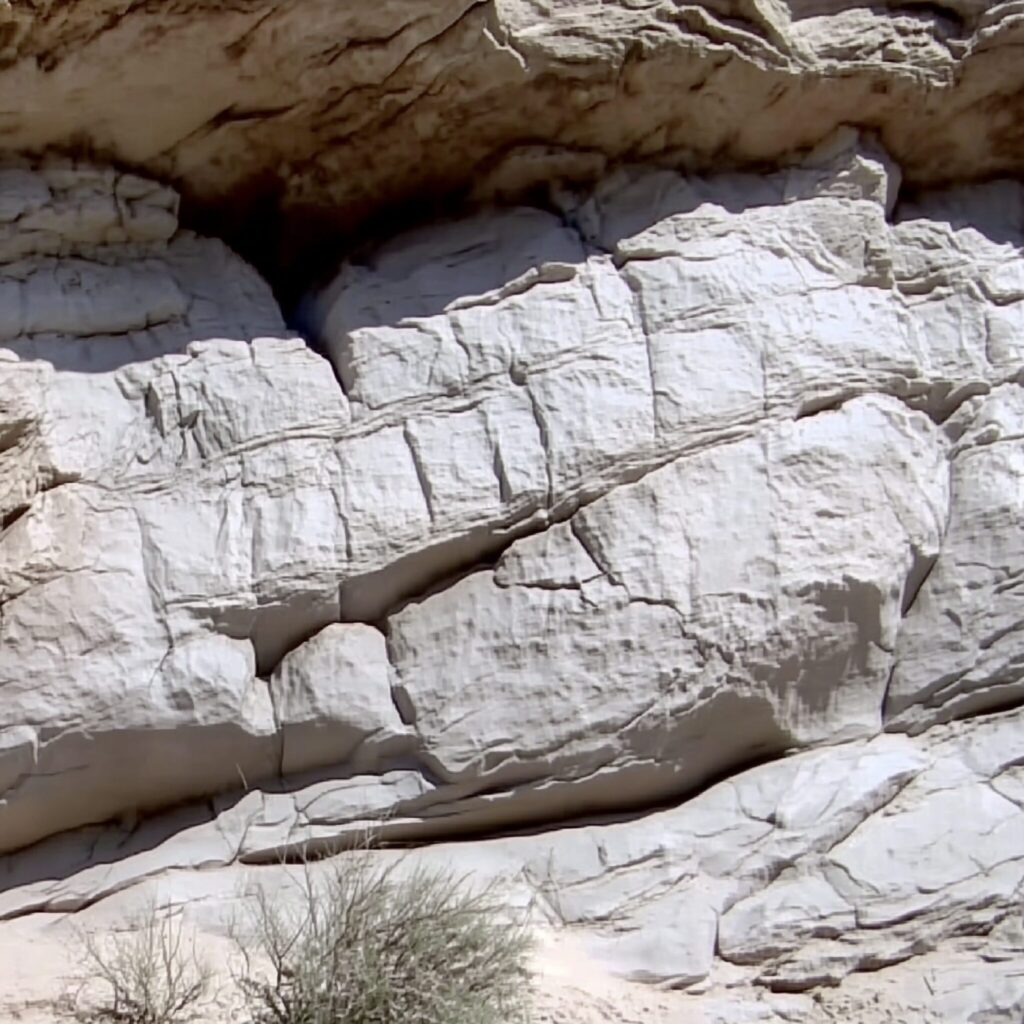
The Animas Mountains in New Mexico are a great place to search for peridot, with rocky terrain and volcanic deposits. Focus on areas where the rocks have weathered, especially along the ridges and outcrops.
Look in the rocky streambeds and slopes where bits of rock have rolled down from higher ground. Bring a screen to sift through the darker rocks – peridot’s green color can be hard to spot at first since it looks similar to the other volcanic rocks around it.
Pyramid Mountains
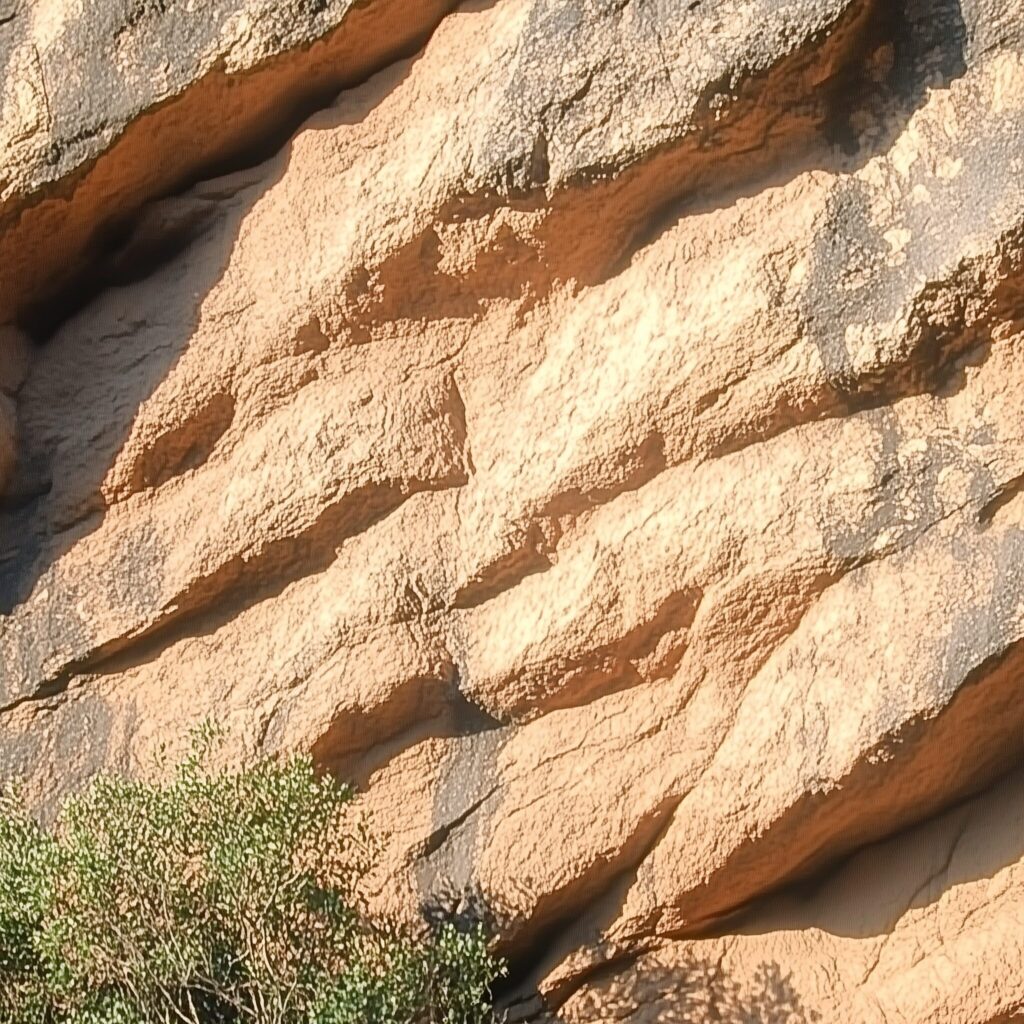
The Pyramid Mountains in New Mexico are a great place to search for peridot, with volcanic rocks full of these green gems. Look in the cracks and crevices in the rocks where peridot often collects after being weathered.
After a rainstorm is the best time to search, as the peridot may be washed into nearby washes. Carefully sift through loose debris, since peridot can blend in with the surrounding volcanic material.
Places Peridot has been found by County
After discussing our top picks, we wanted to discuss the other places on our list. Below is a list of the additional locations where we have succeeded, along with a breakdown of each place by county.
| County | Location |
| Otero | Franklin Mountains |
| Sierra | Caballo Mountains |
| Sierra | Marriottsville |
| Socorro | Chupadera Mountains |
| Socorro | San Mateo Mountains |
| Socorro | Magdalena Mountains |
| San Miguel | Pecos Wilderness |
| San Miguel | Mora Canyon |
| Bernalillo | Sandia Mountains |
| Bernalillo | Manzano Mountains |
| Bernalillo | Tijeras Canyon |
| Valencia | Los Lunas Hills |
| Cibola | Zuni Mountains |
| Cibola | Mount Taylor |
| Rio Arriba | Jicarilla Mountains |
| Rio Arriba | Brazos Mountains |
| Rio Arriba | Chama River Valley |
| Santa Fe | Sangre de Cristo Mountains |
| Santa Fe | Cerrillos Hills |
| Santa Fe | Galisteo Basin |
| Taos | Taos Plateau |
| Taos | Red River |
| Taos | Wheeler Peak |
| San Juan | Chuska Mountains |
| San Juan | Navajo Mountains |
| San Juan | Shiprock |
| Sandoval | Jemez Mountains |
| McKinley | Zuni Mountains |
| McKinley | Ramah Mountains |
| McKinley | Chaco Canyon |
| Sandoval | Rio Puerco Valley |
| Lincoln | Capitan Mountains |
| Lincoln | Nogal Peak |

